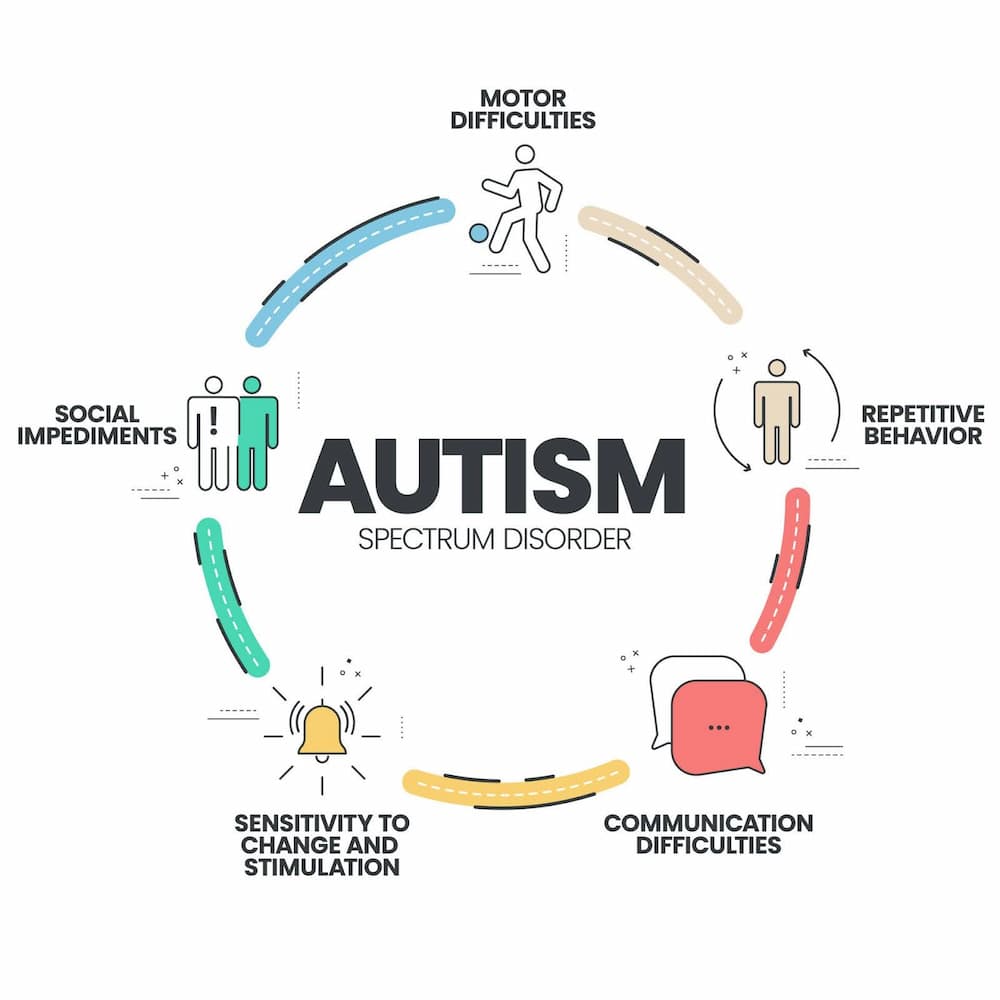Understanding the Range: A Comprehensive Overview to Autism Understanding
Wiki Article
Understanding Autism: A Comprehensive Overview to Signs and signs
Autism Spectrum Condition (ASD) incorporates a wide range of qualities that can significantly affect an individual's social interactions and everyday performance. Recognizing these subtleties not just aids caregivers and educators in offering suitable support however likewise promotes a much more comprehensive environment for individuals with ASD.Introduction of Autism Range Problem
Defining Autism Spectrum Disorder (ASD) involves acknowledging it as a complicated neurodevelopmental condition characterized by a series of challenges in social interaction, communication, and behavioral patterns. The term "range" mirrors the vast irregularity in signs and symptoms and their severity, which can vary dramatically from one person to an additional. ASD commonly shows up in very early youth, although some individuals might not obtain a medical diagnosis up until later in life.Factors influencing the growth of ASD consist of ecological aspects and genetic predispositions, although the specific causes remain under examination. Medical diagnosis frequently relies upon behavior evaluations, as there are no definitive clinical tests for ASD. Early intervention is essential and can significantly boost results, concentrating on boosting communication abilities, social interactions, and adaptive actions.
Individuals with ASD might also exhibit unique strengths, such as outstanding interest to information or specific locations of proficiency. Understanding the diverse nature of ASD is crucial for cultivating a comprehensive environment that fits neurodiversity. Continued research is essential for establishing reliable treatments and assistance systems, allowing people with ASD to grow and fulfill their prospective within culture.
Common Signs of Autism
Recognizing the typical indicators of Autism Range Condition (ASD) is crucial for very early recognition and treatment. These indicators can differ widely in extent and presentation, but particular characteristics are regularly observed in individuals with ASD.One of the most prevalent signs is a marked trouble in developing and keeping eye contact. People may likewise exhibit minimal interest in social communications and show a preference for solitary play.
Sensory level of sensitivities are also common; individuals may panic or underreact to sensory stimulations, such as audios, structures, or lights. autism. Language growth can be atypical, with some kids showing delayed speech or utilizing language in uncommon ways, including echolalia-- repeating phrases or sentences heard elsewhere
It is important to keep in mind that not every person with ASD will display all these signs, and the degree of these actions can differ dramatically. Early acknowledgment enables prompt assistance and sources, enhancing the lifestyle for those on the range.
Social Interaction Difficulties
Social communication difficulties are a trademark of Autism Range Problem (ASD), influencing an individual's capability to involve efficiently with others. These problems can show up in various means, including difficulties in initiating and keeping conversations, recognizing social hints, and responding properly in social communications.Individuals with ASD may deal with nonverbal communication, such as eye contact, facial expressions, and body movement. This can lead to misunderstandings, as their communicative intent might not be appropriately analyzed by others. Moreover, they may locate it difficult you could try here to realize the nuances of tone and context, which are vital for efficient communication.
In team setups, individuals with ASD may feel overloaded and may not recognize how to sign up with in discussions (autism). They might additionally exhibit irregular conversational patterns, such as monologuing regarding details passions without acknowledging social reciprocity
Additionally, these obstacles can cause social isolation or problems in forming relationships, as peers may misinterpret their behavior or interaction design. Recognizing these social communication obstacles is crucial for cultivating encouraging settings that advertise social abilities advancement and improve the top quality of communications for individuals on the autism range.
Sensory Actions and level of sensitivities
Numerous people with Autism Spectrum Disorder (ASD) experience increased sensory level of sensitivities that can dramatically impact their everyday lives. An individual with ASD may locate everyday noises, such as a vacuum cleanser or crowded atmospheres, extremely distressing, leading to anxiousness or crises.Sensory handling distinctions in individuals with ASD can additionally influence their capability to participate in routine activities and social communications. For example, a kid who is sensitive to touch may stand up to physical love or stay clear of particular garments materials. A choice for specific appearances or tastes can restrict nutritional choices and produce difficulties throughout mealtimes.
Recognizing these sensory level of sensitivities is vital for identifying the special experiences of individuals with ASD. image source Recognition of their sensory accounts can cultivate better communication and support methods, producing a setting that fits their needs and enhances their high quality of life. Ultimately, acknowledging sensory level of sensitivities is a crucial element of understanding the broader range of autism.

Sustaining People With Autism
Efficient support for people with Autism Range Problem (ASD) is important for improving their total well-being and cultivating independence. Assistance techniques should be customized to meet the one-of-a-kind needs of each individual, considering their obstacles and strengths.
Social skills training can also play a pivotal duty. autism. Engaging people in team tasks or role-playing circumstances can boost their capability to navigate social interactions. Additionally, it is necessary to inform relative, caregivers, and peers about ASD to cultivate a encouraging and comprehensive community
Conclusion
By fostering boosted communication and social skills, people with autism can navigate their settings a lot more effectively. Ultimately, raised understanding and support can dramatically improve the quality of life for those influenced by ASD.Autism Spectrum Problem (ASD) includes a wide array of qualities that can significantly influence an individual's social communications and daily performance.Individuals with ASD might struggle with nonverbal interaction, such as eye contact, face expressions, and body language.Numerous individuals with Autism Range Problem (ASD) experience increased sensory level of sensitivities that can dramatically affect their everyday lives.Sensory handling differences in people with ASD can also impact their ability to engage in social communications and routine tasks.Understanding these sensory sensitivities is essential for acknowledging the one-of-a-kind experiences of individuals with ASD.
Report this wiki page